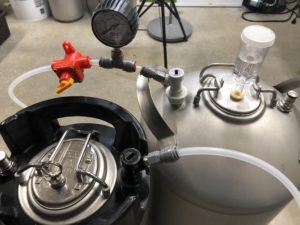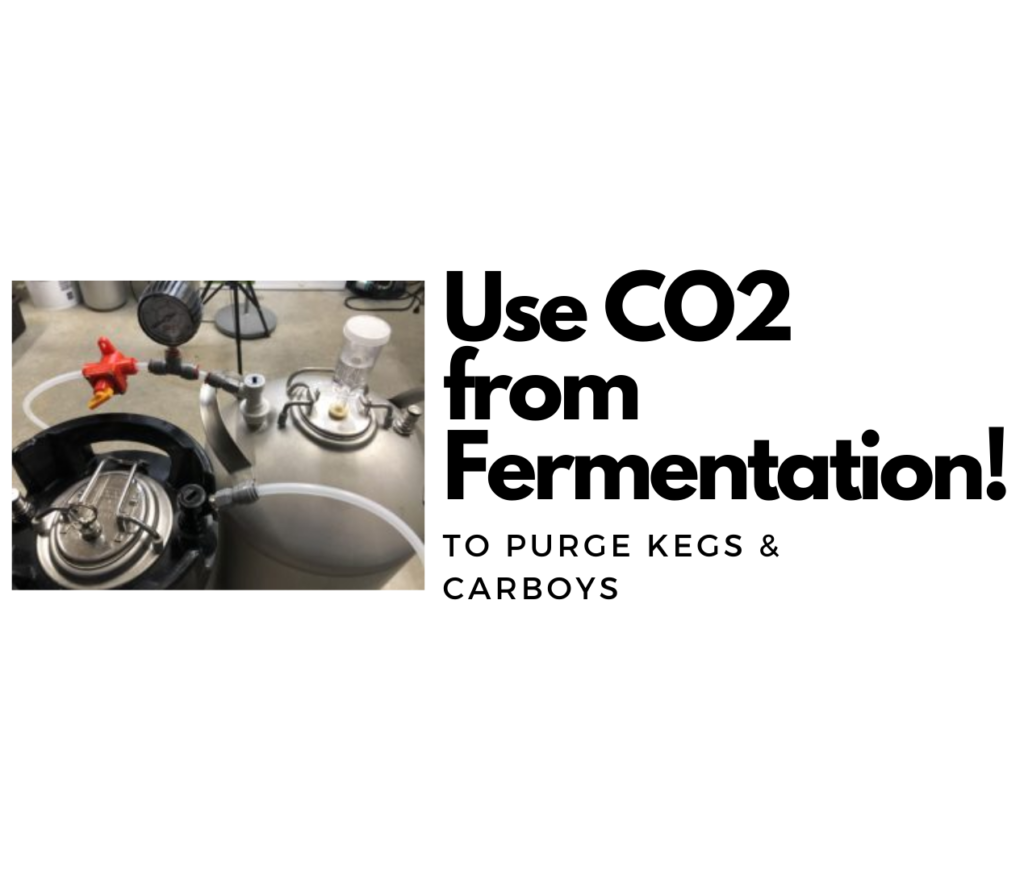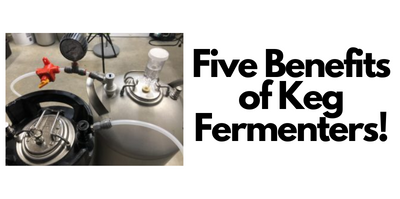
Use CO2 Produced by Fermentation to Purge Serving Kegs, Carboys & Fermenters
A Spunding Valve allows you to maintain a set pressure. If pressure in the vessel exceeds the set point, it is expelled. It generally consists of an adjustable PRV valve, a tee, a gauge and a way to connect to your keg.
Why a Spunding Valve?
There are loads of homebrew related applications for a Spunding valve ranging from pressurized ferementation to naturally carbonating to fixing over carbonated beers and lots more. Check out our resource post on the subject. It’s arguably the go-to resource on the Internet on the subject
Limited Time DEAL on DuoTights!
- DuoTight Fittings are awesome: Easy to use push to connect fittings compatible with EVABarrier lined tubing. Clamp-less installation and reconfiguration.
- Lots of options mean the DuoTight system is flexible and full featured.
- Check out my extensive Hands on Review
Keg Connection has picked up DuoTight fittings and EVABarrier tubing!
DuoTight and EVABarrier at Keg Connection!
20% Off w/Stacking Deals!
- Keg Connection is discounting most things site wide by 15%.
- This is a rare sale… Keg Connection rarely does sitewide sales.
- HBF Readers save more! Coupon code HBF5OFF saves you another 5%
- Flat Rate Shipping: Keg Connection’s Flat Rate Shipping Promotion. Your entire order ships for one flat rate, no matter how much you order, to addresses in the contiguous US.
15% Off at Keg Connection! – remember promo code HBF5OFF to get an additional 5% off!
This sale includes the required the Duotight Blowtie Spunding Valve that’s featured in this write up.
Related: Pressure Capable Fermenters
- 12 Gallon Ball Lock Kegs
- Fermzilla Conical Fermenter
- FermZilla All Rounder Fermenter
- BrewBuilt X2 Fermenters
- BrewBuilt X1 Uni+ Conical Fermenter – Hands on Review
- 10 gallon or 15 gallon keg Ball Lock Kegs – Hands on Review
- Spike Brewing Flex Fermentor
- Spike Conical Fermenters
- Williams Warn BrewKeg
- Kegland Kegmenters – at Wiliam’s Brewing, at MoreBeer
This article contains affiliate links. We may make a small percentage if you use our links to make a purchase. You won’t pay more and you’ll be supporting Homebrew Finds and more content like this. Thank you for your support!
Use CO2 Produced by Fermentation to Purge Serving Kegs, Carboys & Fermenters

This technique requires a BlowTie Spunding Valve. Since the the BlowTie has a defined output port, you can use it to capture CO2 produced by fermentation. The “out” side of the BlowTie is a DuoTight connection, just like the “in” side. Use compatible EVABarrier tubing and fittings and you can route outgoing CO2 wherever you’d like. The primary application I can think of for using this is to purge kegs, carboys and fermenters. The pictured setup shows a 10 gallon keg converted to a fermenter. The “out” side of the BlowTie is connected to the liquid out side of an empty keg. That allows incoming CO2 to purge the keg from bottom to top. The lid PRV valve for the receiving keg is open to allow pressure to vent. Of course you could tee the “out” side and flush multiple kegs or vessels using the CO2 produced by a single fermenter.
- BlowTie 2 Diaphragm Spunding Valve with Gauge FE962 via MoreBeer
- BlowTie 2 Spunding Valve | Complete Kit | Duotight Ball Lock Quick Disconnect (QD) FE964 via MoreBeer
- BLOWTIE 2 DIAPHRAGM SPUNDING VALVE WITH GAUGE via cornykeg.com
- Duotight Blowtie Spunding Valve with Gauge via William’s Brewing
- BlowTie 2 Diaphragm Spunding Valve with Gauge – via Keg Connection
- BlowTie Spunding Valve w/ Built-In Gauge & CMB Disconnect – via Keg Connection
- Kegland BlowTie v1Duotight BlowTie 2 Diaphragm Spunding Valve w/Integrated Pressure Gauge (0-23 PSI) for Pressure Fermentation – KL15042 affiliate link, note that multiple variations of this product may be available, as such a different version may appear at this link
- Canada & International – Search eBay for “Kegland BlowTie” to search for an offering that ships to you
Related Reviews:
Hands on Review: Kegland BlowTie Spunding Valve!
Hands on Review: Kegland DuoTight Fittings & EVABarrier Tubing!
This write-up is part of my Spunding Valve Resource Post – Jump To This Section
More Homebrew Finds!
- Last 50 Finds!
- Top Deals – a curated list of the best deals
- Homebrew Reviews – one of the largest libraries of homebrew reviews in existence!
- Our Top Posts – tips, how-tos, resources posts and more
- Let’s be Friends!
Let’s Be Friends!
Subscribe To Our Email! – 8 Ways to Connect with HBF
Quick Catch-Ups
- Our Last Fifty Finds
- Curated List of Keg Deals
- Curated List of Hop Deals
- Our 10 Most Recent Homebrew Resource Posts
- Top Deals – a curated list of the best of the best
- Our 10 Most Recent Reviews
Top Content
- Our Top Draft and Kegerator Resource Pages
- Our Top Posts – a huge library of how-tos, resources posts & more
- Our Massive Library of Reviews – view the entire list of use our Review by Categories to find just what you’re looking for
This post may contain affiliate links. We may make a commission when you use our links. This will never cost you extra. Thank you for supporting Homebrew Finds!
greatdealsMake sure the components you use are compatible and rated for your intended application. Contact manufacturer with questions about suitability or a specific application. Always read and follow manufacturer directions. tag:lnksfxd top:spundingvalvelnksto lnksto:spundingvalve rp:lnksspundpurge:rp



















I currently run a duotight jumper from fermenter gas out to sanitized serving keg liquid in. The spunding valve then goes on the serving keg gas out, and pressure release remains closed.
At packaging time, the jumper is moved to the liquid out post of the fermenter, which uses a floating dip tube (after replacing QD, the hose is purged). This drains the fermenter from the top down (taking the clearest beer), and fills the serving keg form the bottom up. CO2 is applied to the gas in of the fermenter, and CO2/spunding valve pressure is adjusted for flow rate.